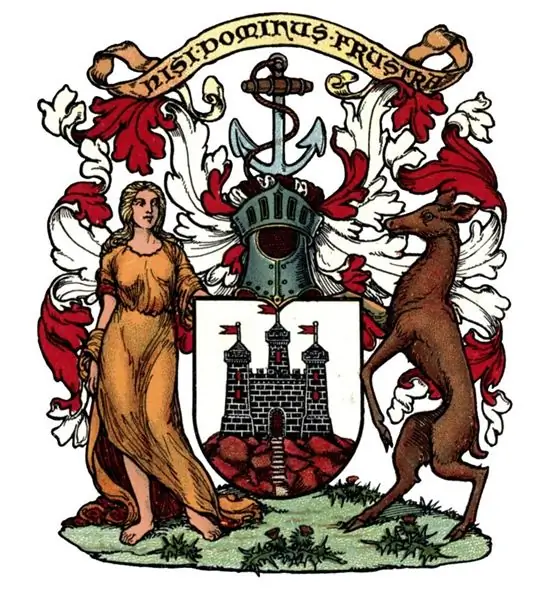
Despite the fact that the coat of arms of Edinburgh, which is part of the official symbols of Scotland, appeared not so long ago, especially in comparison with many European cities, it will overtake any heraldic symbol in splendor.
Basting on the coat of arms of Edinburgh
In world heraldry, a knight's headdress with an open or closed visor, with windbreaks of different colors and patterns, is often used. But such a magnificent outline is only in Edinburgh, it almost completely fills the background of the coat of arms, is made in two heraldic colors - scarlet and silver, symbolizing the moral and strong-willed qualities of the first inhabitants of the Scottish capital and its modern inhabitants.
Description of the coat of arms of the Scottish capital
The heraldic symbol of Edinburgh appeared only in 1647; its official approval took place somewhat later - in 1732. The composition of the coat of arms of the capital of Scotland contains the following important elements:
- a silver shield with a picture of a fortress;
- supporters in the images of a beautiful woman and a doe;
- knight's helmet with windbreak and mantle;
- the ship's anchor, located in the upper part, above the helmet;
- the motto of the city, written on the tape.
Each of the elements of the coat of arms of this Scottish city has its own meaning.
Element symbology
Any tourist who comes to Edinburgh for the first time will not be able to ignore the main attraction of the city - Edinburgh Castle. Therefore, it is understandable why the architectural masterpiece is depicted on the city's coat of arms.
The appearance of the anchor is also fully justified, since Edinburgh is the largest seaport in the country, the anchor symbolizes navigation and its influence on the development of the city, transformation from a small settlement into a large industrial and commercial center.
The highlight of the city's coat of arms is the supporters, their role was entrusted to fragile persons - a richly dressed, slender lady with loose hair and a graceful fallow deer (in some versions - a female deer).
One of the versions is that wealthy women were hiding behind the thick walls of the castle during the hostilities. It was even humorously called "the castle of the maidens", perhaps it was this legend that contributed to the appearance of the lady on the coat of arms of Edinburgh.
The appearance of the doe is also associated with the legend that the patron saint of the city voluntarily spent most of his life alone in the dense Edinburgh forests. He found consolation in fellowship with the deer, which visited the lonely monk every day.






